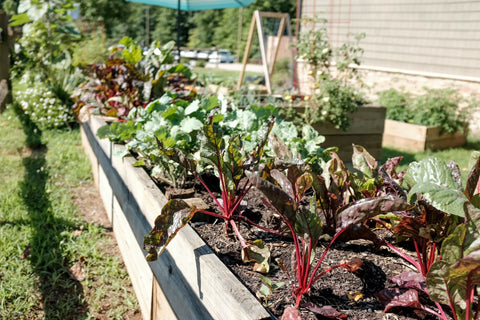As the vibrant colors of summer gradually give way to the warm and earthy hues of autumn, the diligent gardener's work is far from over. While the fall season often signifies the end of the growing season for many crops, it presents an excellent opportunity to nurture and protect your garden's most valuable asset: the soil. One of the most effective ways to accomplish this is by planting cover crops. In this comprehensive blog post, we will explore the world of cover crops for fall, why they are essential for soil health, how to select the right cover crops for your garden, and the step-by-step process of planting and managing them. The following content also has some reference value for raised garden beds.
Understanding the Importance of Cover Crops
Cover crops, also known as green manure, are crops planted primarily to benefit the soil rather than for harvest. These crops offer a multitude of benefits to your garden, especially during the fall and winter months:
Soil Enrichment
- Cover crops are natural fertilizers. They capture and store essential nutrients from the soil, preventing them from leaching away during heavy rains. When these cover crops are eventually incorporated into the soil, they release these nutrients, enriching it for the next growing season.

Weed Suppression
- Thick cover crops create a living mulch that competes with weeds for sunlight and resources, reducing weed growth and the need for manual weeding.
Erosion Control
- Over the fall and winter, soil can become vulnerable to erosion, especially in areas with heavy rainfall or snow. Cover crops help protect the soil from erosion by creating a protective canopy of foliage and establishing strong root systems.
Pest Management
- Some cover crops, like marigolds or mustards, have natural pest-repelling properties. Planting these cover crops can help reduce pest populations in your garden.
Improved Soil Structure
- Cover crop root systems help improve soil structure by breaking up compacted soil and promoting aeration. This allows water and nutrients to penetrate deeper into the ground.
Choosing the Right Cover Crops
Selecting the right cover crops for your garden depends on several factors, including your climate, soil type, and specific goals. Here are some common cover crops for fall and their benefits:
Winter Rye (Secale cereale)
- Benefits: Excellent for erosion control and adding organic matter to the soil.
- Planting Time: Late summer to early fall.
- Planting Depth: 1 to 2 inches.
Crimson Clover (Trifolium incarnatum)
- Benefits: Fixes nitrogen in the soil, provides a source of nectar for pollinators.
- Planting Time: Late summer to early fall.
- Planting Depth: 1/4 to 1/2 inch.
Hairy Vetch (Vicia villosa)
- Benefits: Fixes nitrogen, suppresses weeds, and improves soil structure.
- Planting Time: Late summer to early fall.
- Planting Depth: 1 inch.
Mustard (Brassica juncea)
- Benefits: Biofumigant properties that suppress soil-borne pests and diseases.
- Planting Time: Late summer to early fall.
- Planting Depth: 1/4 to 1/2 inch.
Buckwheat (Fagopyrum esculentum)
- Benefits: Attracts pollinators, suppresses weeds, and adds organic matter.
- Planting Time: Late spring to late summer.
- Planting Depth: 1 inch.
Planting and Managing Cover Crops
Now that you've chosen the right cover crops for your garden, let's discuss the step-by-step process of planting and managing them:
Prepare the Soil
- Before planting, clear the area of any existing crops or weeds. Loosen the soil to a depth of 4-6 inches to provide a favorable environment for root growth.

Sow the Seeds
- Broadcast the cover crop seeds evenly over the prepared soil. Follow the recommended seeding rate on the seed packet for your chosen cover crop.
Cover the Seeds
- Lightly rake the soil to cover the seeds. Ensure good seed-to-soil contact for optimal germination.
Water Thoroughly
- After planting, water the area well to help the seeds establish and germinate.
Monitor Growth
- Keep an eye on your cover crops as they grow. If you notice any signs of pest or disease issues, address them promptly.
Manage Winter Kill Crops
- Some cover crops, like buckwheat or cowpeas, will be killed by frost. In this case, allow them to die back naturally.
Terminate Cover Crops
- For winter-killed cover crops, you can till them into the soil in early spring before planting your main crops. For cover crops that overwinter, mow or cut them down in early spring, allowing a few weeks for decomposition before planting.
Conclusion: Nurturing Your Garden's Future
Cover crops are a gardener's secret weapon for maintaining and enhancing soil health throughout the fall and winter seasons. By strategically planting the right cover crops, you can protect your garden's soil from erosion, improve its fertility, suppress weeds, and set the stage for a productive and vibrant garden in the upcoming growing season. Don't miss the opportunity to invest in your garden's future and enjoy the benefits of lush and thriving plants by incorporating cover crops into your fall gardening routine.









